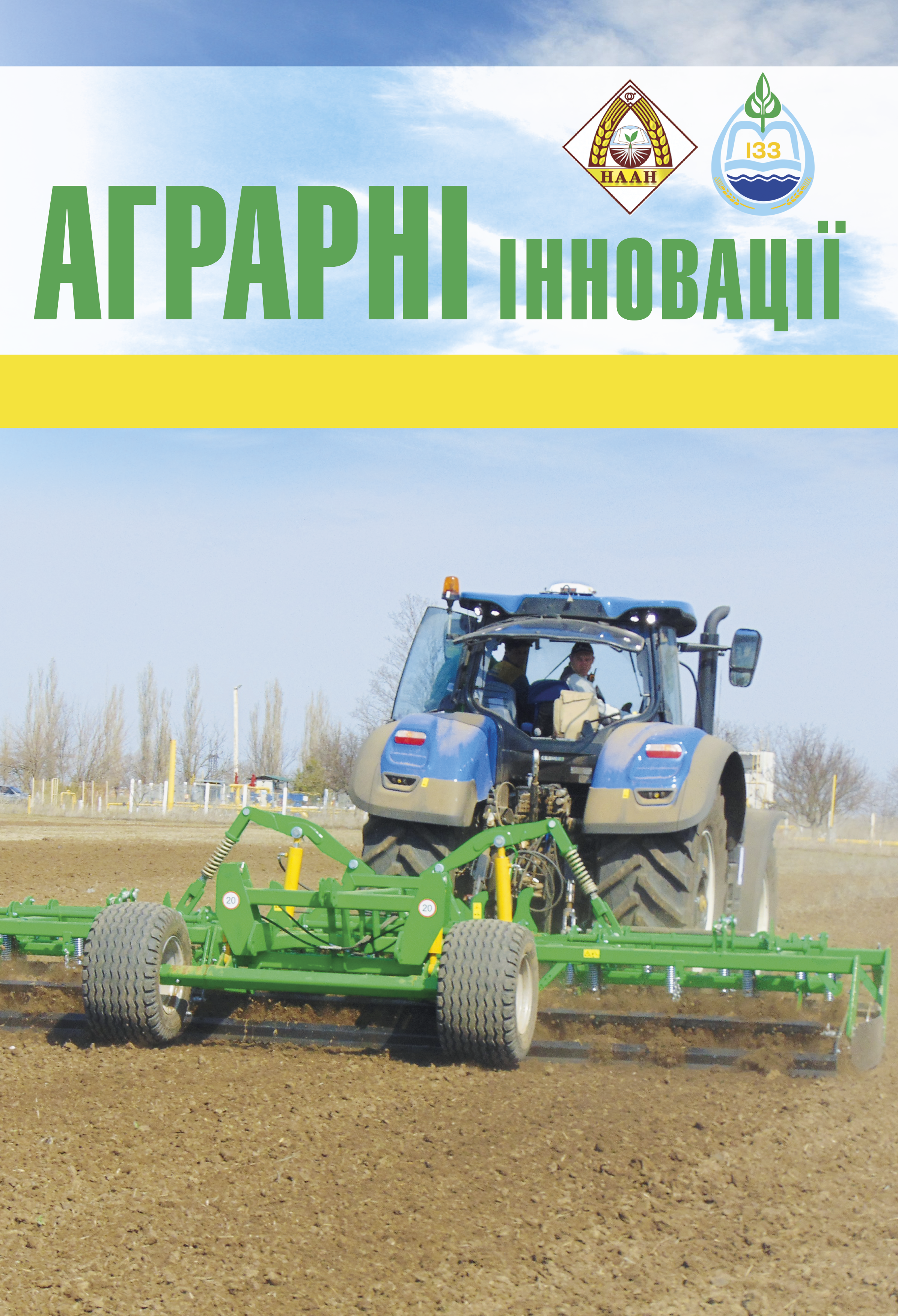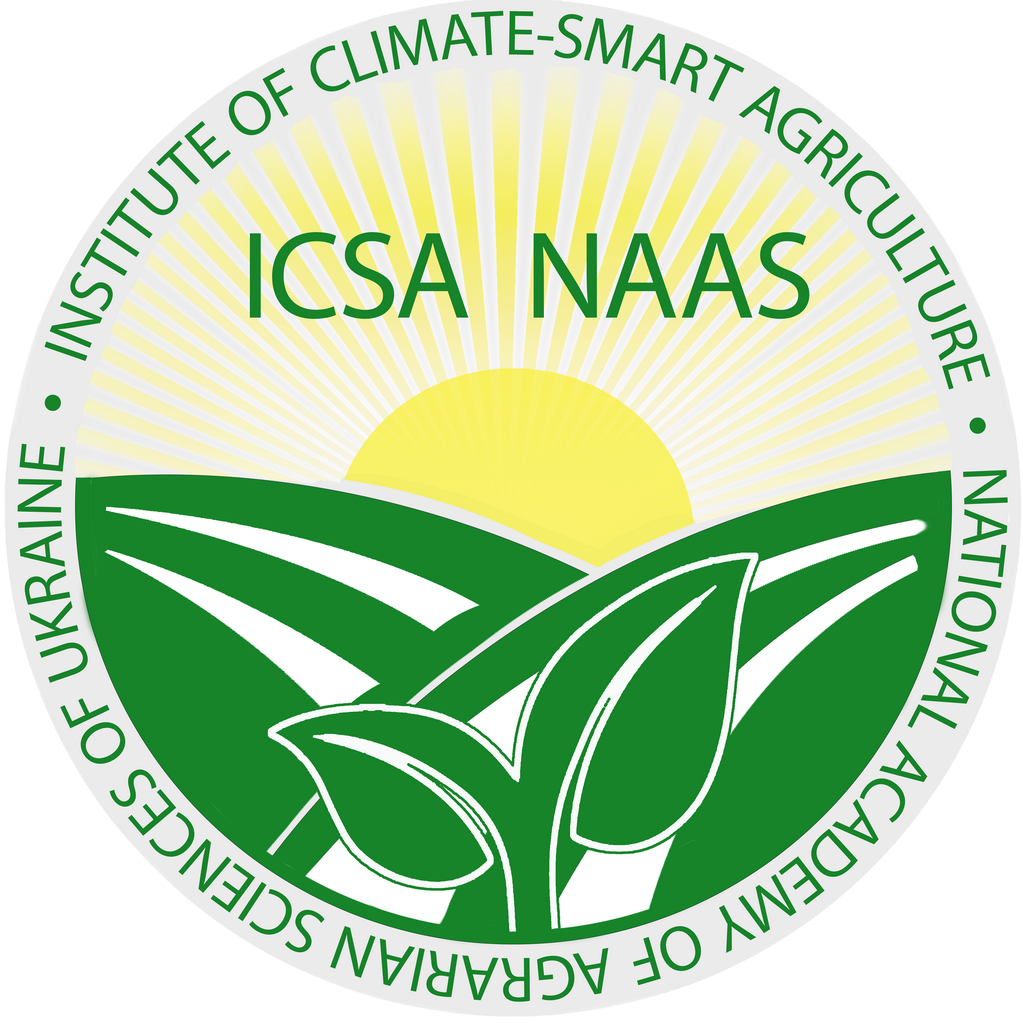Biology and harmfulness of the bean bruchid on common bean
Abstract
Purpose. To investigate the biology and harmfulness of the bean beetle eater on early-ripening, bush varieties of common beans in field conditions and during storage in the Kharkiv region. Methods. The research was conducted at the Educational, Scientific and Production Center «Experimental field Dokuchaevske» of the State Biotechnological University and at the State Enterprise «Experimental Farm «Elitne»» of the Plant Production Institute named after V. Ya. Yuriev of the National Academy of Agrarian Sciences of Ukraine during 2023–2024 on two varieties of common beans: Wawelska and Black Turtle. Commonly accepted methods were used: mowing with an entomological net, visual inspection of plants, and dissection of beans and seeds. Laboratory studies were conducted according to DSTU 4138-2002. Statistical processing of the obtained data was done using dispersion analysis. Results. The biological features of development and phenology of the bean beetle on common beans in field conditions and during storage were studied. This pest appeared on the crops in the first decade of July and managed to complete one life cycle, colonizing 16–34 % of beans and 10.4–19 % of grains. It was found that the bean beetle preferred the Wawelska variety. During storage, A. obtectus had three generations. Nutrition of bruchid larvae inside bean grains caused a decrease in the mass of 1000-kernel weight by 19–26 % and laboratory germination by 13.2–100 %. In the warehouse, more damage by the phytophagus of common bean seeds of the Black Tortoise variety was noted. Conclusions. Additional feeding of bruchid imago on bean flowers was recorded. Females laid eggs on formed beans. One larva developed in one grain, rarely it was two – three larvae of the pest. During the years of research, the bean beetle had one generation in the field and three in storage. The average colonization of beans by the bruchid in the field was 25 %, the Wawelska variety was more severely damaged. The influence of the number of exit holes in bean grains on the weight of 1000-kernel weight and the laboratory germination of common beans has been proven. If there are five or more damages in the grain, the seeds completely lose their germination, regardless of the variety.
References
2. Насіння сільськогосподарських культур. Методи визначення якості. ДСТУ 4138-2002. Київ: Держспоживстандарт України, 2003. 170 с.
3. Станкевич С. В., Забродіна І. В., Васильєва Ю. В., Туренко В. П., Кулєшов А. В., Білик М. О. Моніторинг шкідників і хвороб сільськогосподарських культур. Харків: ФОП Бровін О. В., 2020. 624 с.
4. Томашевська O. Перспективи виробництва квасолі в контексті нішевої диверсифікації сільського господарства та нарощування його експортного потенціалу. Actual Problems of Economics. 2024. Vol. 3. № 273. Рр. 76–86. DOI: 10.32752/1993-6788-2024-1-273-76-86.
5. Alvarez N., McKey D., Hossaert-McKey M., Born C., Mercier L., Benrey B. Ancient and recent evolutionary history of the bruchid beetle, Acanthoscelides obtectus Say, a cosmopolitan pest of beans. Molecular ecology. 2005. № 14. Рр. 1015–1024. DOI: 10.1111/j.1365-294X .2005.02470.x.
6. Ayvaz A., Sagdic O., Karaborklu S., Ozturk I. Insecticidal activity of the essential oils from different plants against three stored-product insects. Journal of Insect Science. 2010. Vol. 10. № 21. Рр. 1–13. DOI: 10.1673/031.010.2101.
7. Baier A. H., Webster B. D. Control of Acanthoscelides obtectus Say (Coleoptera: Bruchidae) in Phaseolus vulgaris L. seed stored on small farms-I. Evaluation of damage. Journal of Stored Products Research. 1992. Vol. 28. № 4. Рр. 289–293.
8. Delgado-Salinas A., Turley T., Richman A., Lavin M. Phylogenetic analysis of the cultivated and wild species of Phaseolus (Fabaceae). Systematic Botany. 1999. № 24. Рр. 438–460.
9. Duan C., Zhu Z., Li W., Bao S., Wang X. Genetic diversity and differentiation of Acanthoscelides obtectus Say (Coleoptera: Bruchidae) populations in China. Agricultural and Forest Entomology. 2016. Vol. 19. № 2. Рр. 113–121. DOI: 10.1111/afe.12187.
10. Ebinu J., Nsabiyera V., Otim M., Nkalubo S., Ugen M., Agona A., Talwana H. Susceptibility to bruchids among common beans in Uganda. African Crop Science Journal. 2016. Vol. 24. № 3. Рр. 289–303. DOI: 10.4314/acsj.v24i3.6.
11. Ishimoto M., Chrispeels M. J. Protective mechanism of the Mexican bean weevil against high levels of a-amylase inhibitor in the common bean. Plant Physiol. 1996. Vol. 111. № 2. Рр. 393–401. DOI: 10.1104/pp.111.2.393.
12. Keszthelyi S., Egri H. B., Horváth D., Csóka Á., Kovács G., Donkó T. Nutrient content restructuring and CT-measured density, volume attritions on damaged beans caused by Acanthoscelides obtectus Say (Coleoptera: Chrysomelidae). Journal of Plant Protection Research. 2018. Vol. 58. № 1. Рр. 91–95. DOI: 10.24425/119123.
13. Lazarević J., Jevremović S., Kostić I., Kostić M., Vuleta A., Manitašević-Jovanović S., Šešlija-Jovanović D. Toxic, oviposition deterrent and oxidative stress effects of Thymus vulgaris essential oil against Acanthoscelides obtectus. Insects. 2020. Vol. 11. №. 9. 563. DOI: 10.3390/insects11090563.
14. Lezhenina I. P., Vasilieva Yu. V. On the biology of the east asian seed beetle, Megabruchidius dorsalis (Coleoptera, Chrysomelidae, Bruchinae), an adventive species for Ukraine. Zoodiversity. 2020. Vol. 54. № 4. Рр. 307–316. DOI: 10.15407/zoo2020.04.307.
15. Lü J., Song B. S., Li N. Z., Xu R. L. A tentative observation of damage loss caused by bean weevil, Acanthoscelides obtectus Say. Plant Quarantine. 1994. № 8. Рр. 263–267.
16. Mbogo K., Davis J., Myers J. Transfer of the arcelinphytohaemagglutinin-α amylase inhibitor seed protein locus from tepary bean (Phaseolus acutifolius A. Gray) to common bean (P vulgaris L.). Аgricultural and Food Sciences. Biotechnology. 2009. Vol. 8. № 3. Рр. 285–295. DOI: 10.3923/BIOTECH.2009.285.295.
17. Njoroge A., Affognon H., Mutungi Ch., Richter U., Hensel O., Rohde B., Mankin R. Bioacoustics of Acanthoscelides obtectus (Coleoptera: Chrysomelidae: Bruchinae) on Phaseolus vulgaris (Fabaceae). Florida Entomologist. 2017. Vol. 100. №. 1. Рр. 109–115. DOI: 10.1653/024.100.0116.
18. Ogendo J. O., Deng A. L., Birech R. J., Bett P. K. Plantbased products as control agents of stored-product insect pests in the Tropics. In: Progress in Food Preservation, 2012. Рр. 581–601. DOI: 10.1002/9781119962045.ch27.
19. Oliveira M. R. C, Correˆa A. S., Souza G. A., Guedes R. N. C., Oliveira L. O. Mesoamerican Origin and Pre- and Post-Columbian Expansions of the Ranges of Acanthoscelides obtectus Say, a Cosmopolitan Insect Pest of the Common Bean. PLoS ONE. 2013. Vol. 8. № 7. e70039. DOI: 10.1371/journal.pone.0070039.
20. Padín S., Dal Bello G., Fabrizio M. Grain loss caused by Tribolium castaneum, Sitophilus oryzae and Acanthoscelides obtectus in stored durum wheat and beans treated with Beauveria bassiana. Journal of Stored Products Research. 2002. Vol. 38. № 1. Рр. 69–74. DOI: 10.1016/S0022-474X(00)00046-1.
21. Paul U. V., Lossini J. S., Edwards P. J., Hilbeck A. Effectiveness of product from four locally grown plants for the management of Acanthoscelides obtectus (Say) and Zabrotes subfasciatus (Boheman) (both Coleoptera: Bruchidae) in stored beans under laboratory and farm conditions in northern Tanzania. Journal of Stored Products Research. 2009. № 45. Рр. 97–107. DOI: 10.1016/j.jspr.2008.09.006.
22. Quentin M. E., Spencer J., Miller J. R. Bean tumbling as a control measure for the common bean weevil, Acanthoscelides obtectus. Entomologia Experimentalis et Applicata. 1991. Vol. 60. № 2. Рр. 105–109. DOI: 10.1111/j.1570-7458.1991.tb01529.x.
23. Ron A., González A., Rodiño P., Santalla M., Godoy Montiel L., Papa R. History of the common bean crop: Its evolution beyond its areas of origin and domestication. Arbor. Ciencia, Pensamiento y Cultura. 2016. Vol. 192. № 779. a317. DOI: 10.3989/arbor.2016.779n3007.
24. Sales M. P, Gerhardt I. R., Grossi-de-Sa´ M. F., Xavier-Filho J. Do legume storage proteins play a role in defending seeds against bruchids? Plant Physiology. 2000. Vol. 124, № 2. Pр. 515–522. DOI: 10.1104/pp.124.2.515.
25. Schmale I., Wäckers F. L., Cardona C., Dorn S. Combining parasitoids and plant resistance for the control of the bruchid Acanthoscelides obtectus in stored beans. Journal of Stored Products Research. 2003. Vol. 39. № 4. Рр. 401–411. DOI: 10.1016/S0022-474X(02)00034-6.
26. Schoonhoven A. V., Cardona C. Low levels of resistance to the Mexican bean weevil in dry beans. Journal of Economic Entomology. 1982. Vol. 75. № 4. Рр. 567–569. DOI: 10.1093/jee/75.4.567.
27. Soares M. A., Quintela E. D., Mascarin G. M., Arthurs S. P. Effect of temperature on the development and feeding behavior of Acanthoscelides obtectus (Chrysomelidae: Bruchinae) on dry bean (Phaseolus vulgaris L.). Journal of Stored Products Research. 2015. Vol. 61. Рр. 90–96. DOI: 10.1016/j.jspr.2014.12.005.
28. Velten G., Rott A. S., Cardona C., Dorn S. Effects of a plant resistance protein on parasitism of the common bean bruchid Acanthoscelides obtectus (Coleoptera: Bruchidae) by its natural enemy Dinarmus basalis (Hymenoptera: Pteromalidae). Biological Control. 2007. Vol. 43. № 1. Рр. 78–84. DOI: 10.1016/j.biocontrol.2007.05.003.
29. Vuts J., Powers S. J., Caulfield J. C., Pickett J. A., Birkett M. A. Multiple roles of a male-specific compound in the sexual behavior of the dried bean beetle, Acanthoscelides obtectus. Journal of Chemical Ecology. 2015. Vol. 41. № 3. Рр. 287–293. DOI: 10.1007/s10886-015-0560-3.






